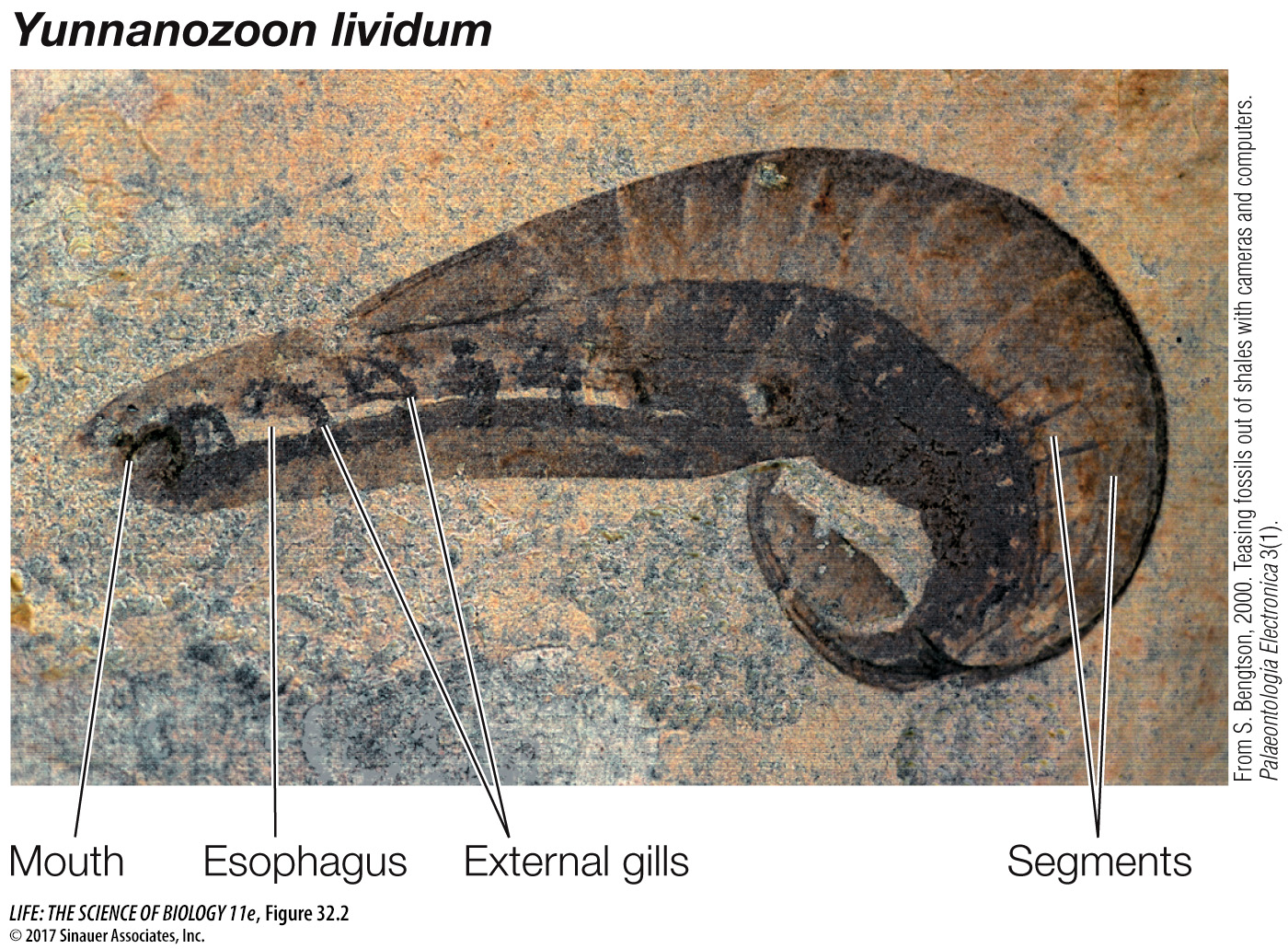Scientists are learning much about the ancestors of modern deuterostomes from fossils discovered in 520-million-year-old rocks in China. Some of these early deuterostomes had skeletons similar to those of echinoderms, but unlike modern adult echinoderms, they had bilateral symmetry and a pharynx with slits through which water flowed. Another early deuterostome group, the yunnanozoans, was discovered in China’s Yunnan Province. The well-preserved fossils reveal animals that had large mouths, six pairs of external gills, and a segmented posterior body section bearing a light cuticle (Figure 32.2). The features of these fossil animals, together with findings from phylogenetic analyses of living species, show that the earliest deuterostomes were bilaterally symmetrical, segmented animals with pharyngeal slits. The adult forms of the living echinoderms with their unique symmetry (in which the body parts are arranged along five radial axes) evolved much later. Other deuterostomes retained the ancestral bilateral symmetry.

Figure 32.2Ancestral Deuterostomes Had External Gills The extinct yunnanozoans may be ancestral deuterostomes. This fossil, which dates from the Cambrian, shows the six pairs of external gills and segmented posterior body that characterized these animals.

